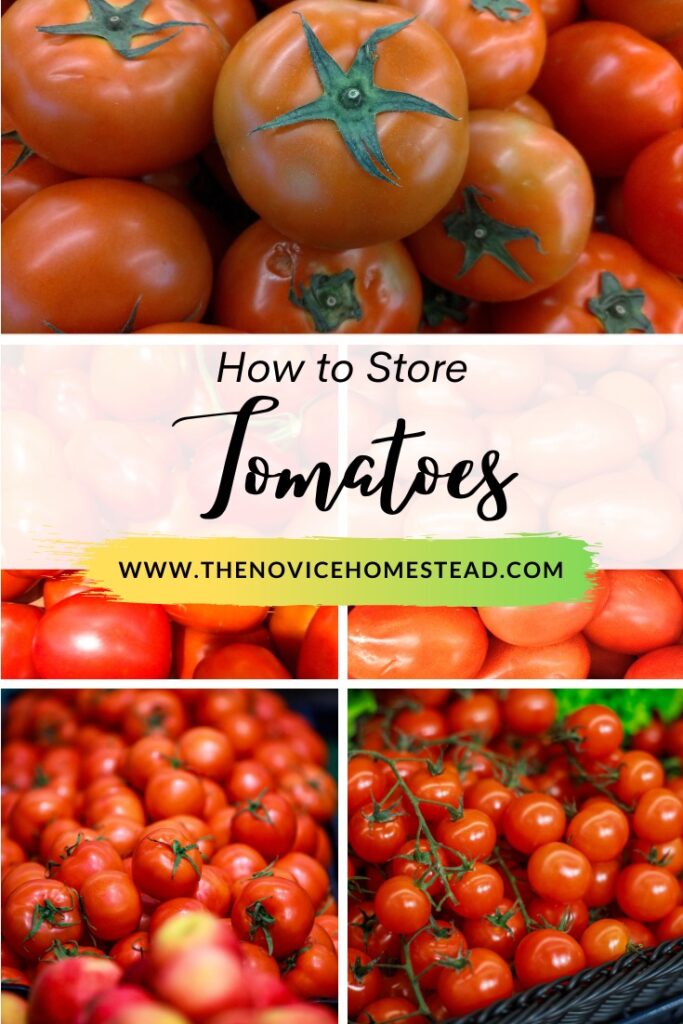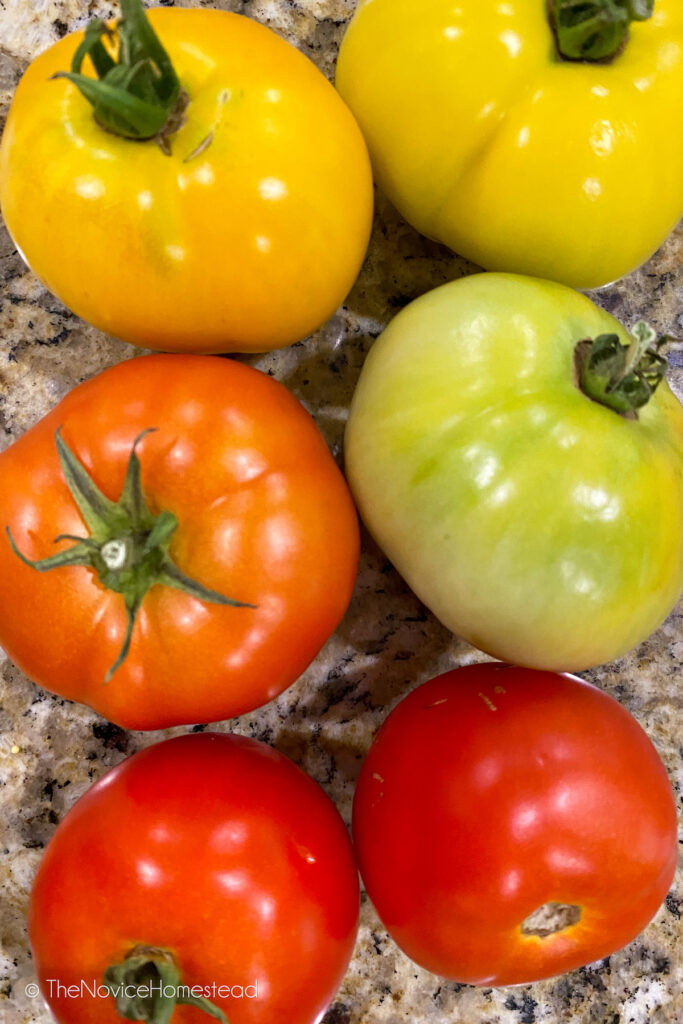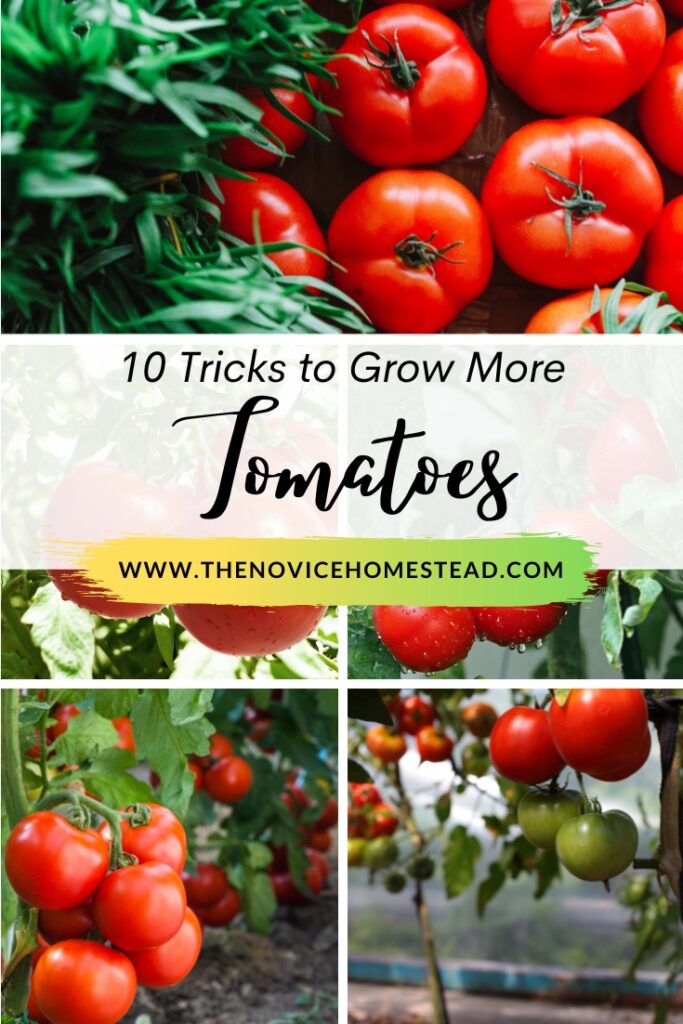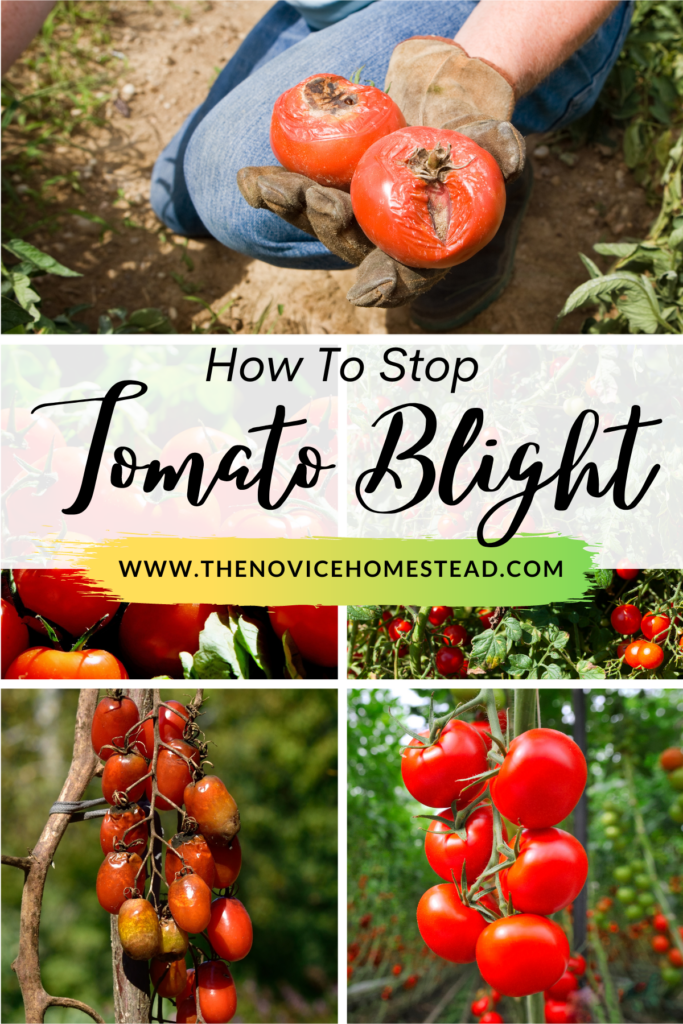How you store tomatoes can have a major impact on their flavor and how long they last. In this post we’ll share several tricks for storing tomatoes that taste better and last longer!

Should You Refrigerate Tomatoes?
To refrigerate or not to refrigerate? That is the question that is continuously up for debate when it comes to storing tomatoes!
Refrigerating tomatoes slows the ripening process, extending their “shelf” life by up to a week. If you have a lot of tomatoes and are worried whether or not you’ll be able to use them all, you may consider refrigerating some of them to reduce waste.
That being said, refrigeration should be a last resort. The cold temperatures can negatively affect flavor and texture. Cut tomatoes can also pick up “off” flavors from other food items in the fridge. Wrapping or placing cut tomatoes in a storage container can help avoid this issue (more on storing cut tomatoes later in the post).
Even if kept in a storage container, many people feel that tomatoes lose their flavor and don’t taste as good if they’ve been in the fridge. The texture may also start to deteriorate so that they become more grainy or mealy.
My personal preference is to keep fresh, whole tomatoes at room temperature and only refrigerate if I am am unable to use them all within a couple weeks.
Most of my homegrown tomatoes last for 1-2 weeks on the counter at room temperature, when I use the tricks for storing tomatoes that I’ve detailed below.

Note: We’ve included shop-able ad links in this post to products we love and use in our own home; read our disclosure policy here.
6 Tips for Storing Tomatoes
The following tips will help keep whole, uncut tomatoes fresher longer. These are the “secrets” I use to help keep tomatoes that I pick from my garden fresh and flavorful!
Related: When is the best time to pick tomatoes?
1. Avoid Direct Sunlight
Lining up freshly picked tomatoes in the windowsill makes for a pretty picture. However, the sunlight causes the tomatoes to ripen and then deteriorate more quickly.
It’s fine to keep tomatoes in your kitchen, but store them in a place that is out of the path of direct or indirect sunlight.
2. Ripen on a Rack
If your tomatoes still have some ripening to do, place them on a wire rack, like the one you use to cool cooking after baking. This allows air to circulate around the tomatoes so they ripen evenly.
3. Store Stem Side Down
If your tomatoes are already ripe, you’ll want to flip them so that the stem faces down. This prevents moisture loss through the stem, keeping your tomatoes fresher longer. It also helps keep bacteria and mold from entering the fruit through the stem.
4. Stick to a Single Layer
Whether ripe or unripe, you never want to stack tomatoes, as this can damage the delicate fruit. Stacking or piling your tomatoes in a bowl or basket can cause bruising, splitting, and mushy spots. Your tomatoes won’t last nearly as long.
It’s always best to store your tomatoes in a single layer, with a little bit of space between each one.
5. Save the Stems
Leaving the stem on your tomato doesn’t hurt anything. However, removing the stem creates the potential for unintentional damage at the removal site, plus it can create an opening for bacteria to enter the fruit.
Anytime you damage the fruit or allow bacteria to get at it, you’re increasing the chance for spoilage. There’s no need to remove the stem, so don’t chance it! Leave it be.
6. Avoid Apples and Bananas
Unless you’re trying to ripen your tomatoes, you want to keep them away from most other fruits. That’s because fruits produce ethylene as they ripen, and this gas can cause other fruits (like your tomatoes) to ripen or spoil.
Fruits and veggies to keep away from your tomatoes:
- Apples
- Bananas
- Peaches
- Pears
- Avocados
- Melons (except cantaloupe)
- Potatoes
- Mangoes
- Plums
- Strawberries
Tomatoes themselves do produce ethylene, but a small amount, so it’s ok to keep them together with other tomatoes.
How to Store Cut Tomatoes
Cut tomatoes are handled a bit differently than whole tomatoes. Once you cut a tomato, you open it up to oxygen and bacteria, both of which will cause it to spoil quickly.
To save leftover tomato, cover the cut portion with plastic wrap or beeswax wrap (which is more environmentally friendly than single use plastic). Alternately, you can place the tomato inside a tightly sealed food storage container.
Place the covered tomato half in the fridge. It should keep for a day or two this way.
Once cut, tomatoes will not last as long as a whole tomato, but doing the above will extend their usefulness as long as possible.
More Tomato Tips


Very useful information